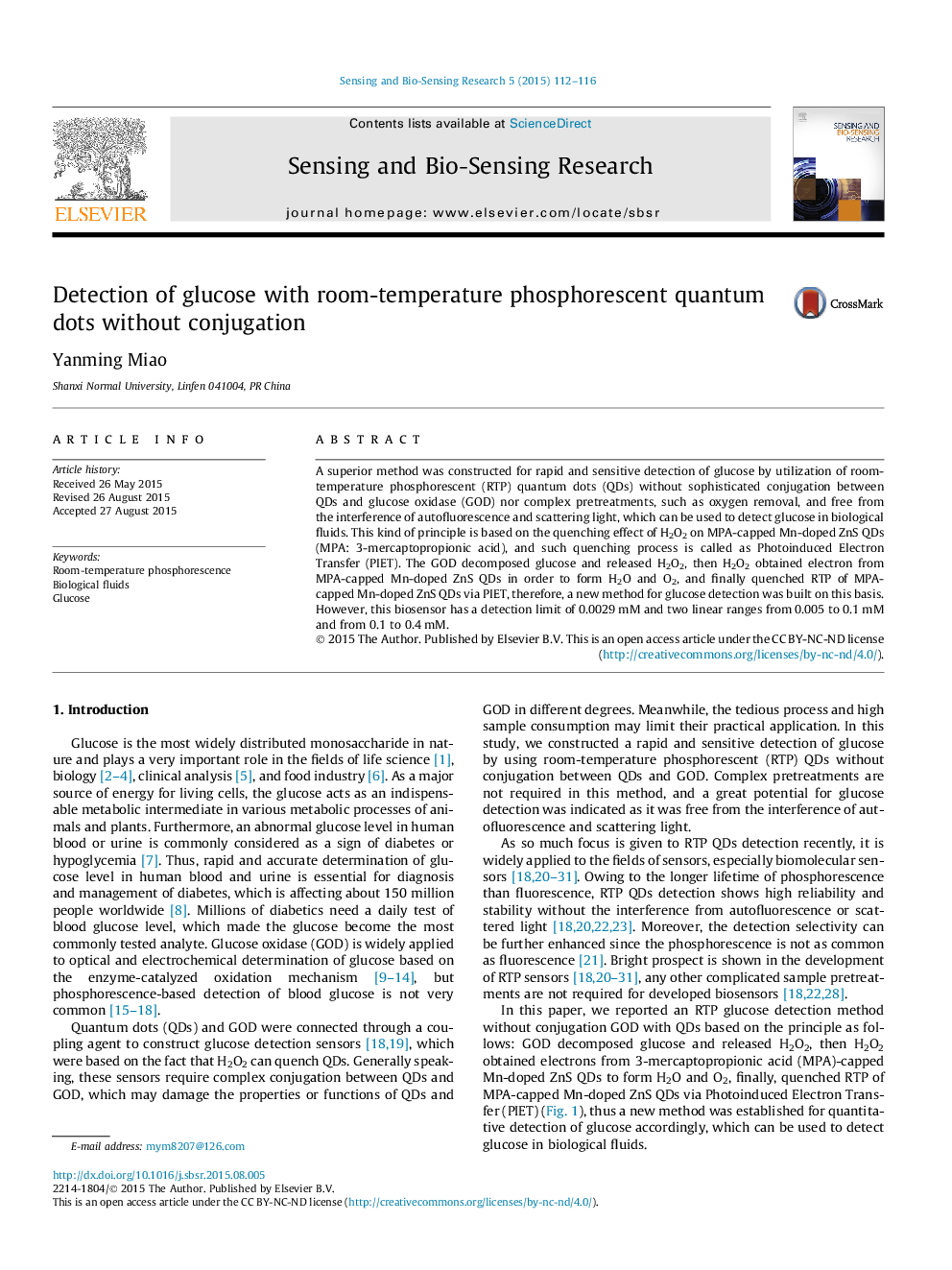| Article ID | Journal | Published Year | Pages | File Type |
|---|---|---|---|---|
| 804072 | Sensing and Bio-Sensing Research | 2015 | 5 Pages |
A superior method was constructed for rapid and sensitive detection of glucose by utilization of room-temperature phosphorescent (RTP) quantum dots (QDs) without sophisticated conjugation between QDs and glucose oxidase (GOD) nor complex pretreatments, such as oxygen removal, and free from the interference of autofluorescence and scattering light, which can be used to detect glucose in biological fluids. This kind of principle is based on the quenching effect of H2O2 on MPA-capped Mn-doped ZnS QDs (MPA: 3-mercaptopropionic acid), and such quenching process is called as Photoinduced Electron Transfer (PIET). The GOD decomposed glucose and released H2O2, then H2O2 obtained electron from MPA-capped Mn-doped ZnS QDs in order to form H2O and O2, and finally quenched RTP of MPA-capped Mn-doped ZnS QDs via PIET, therefore, a new method for glucose detection was built on this basis. However, this biosensor has a detection limit of 0.0029 mM and two linear ranges from 0.005 to 0.1 mM and from 0.1 to 0.4 mM.
